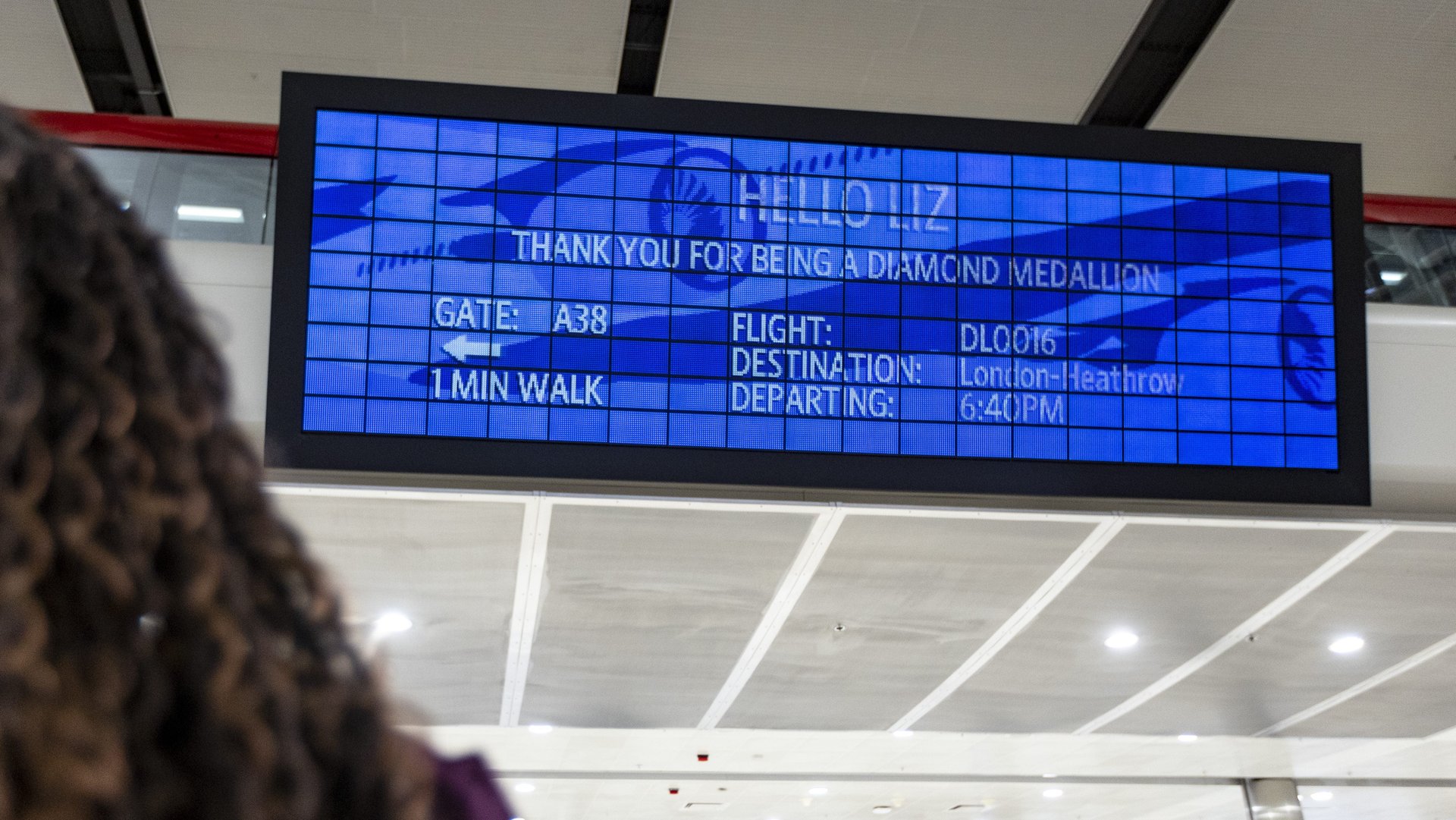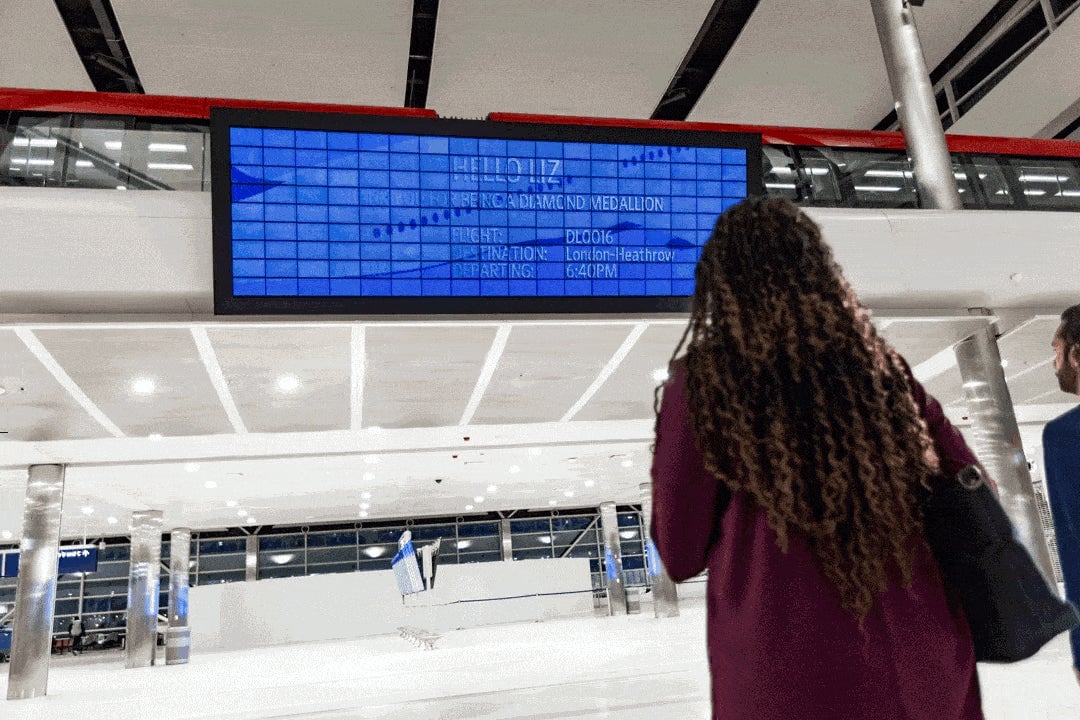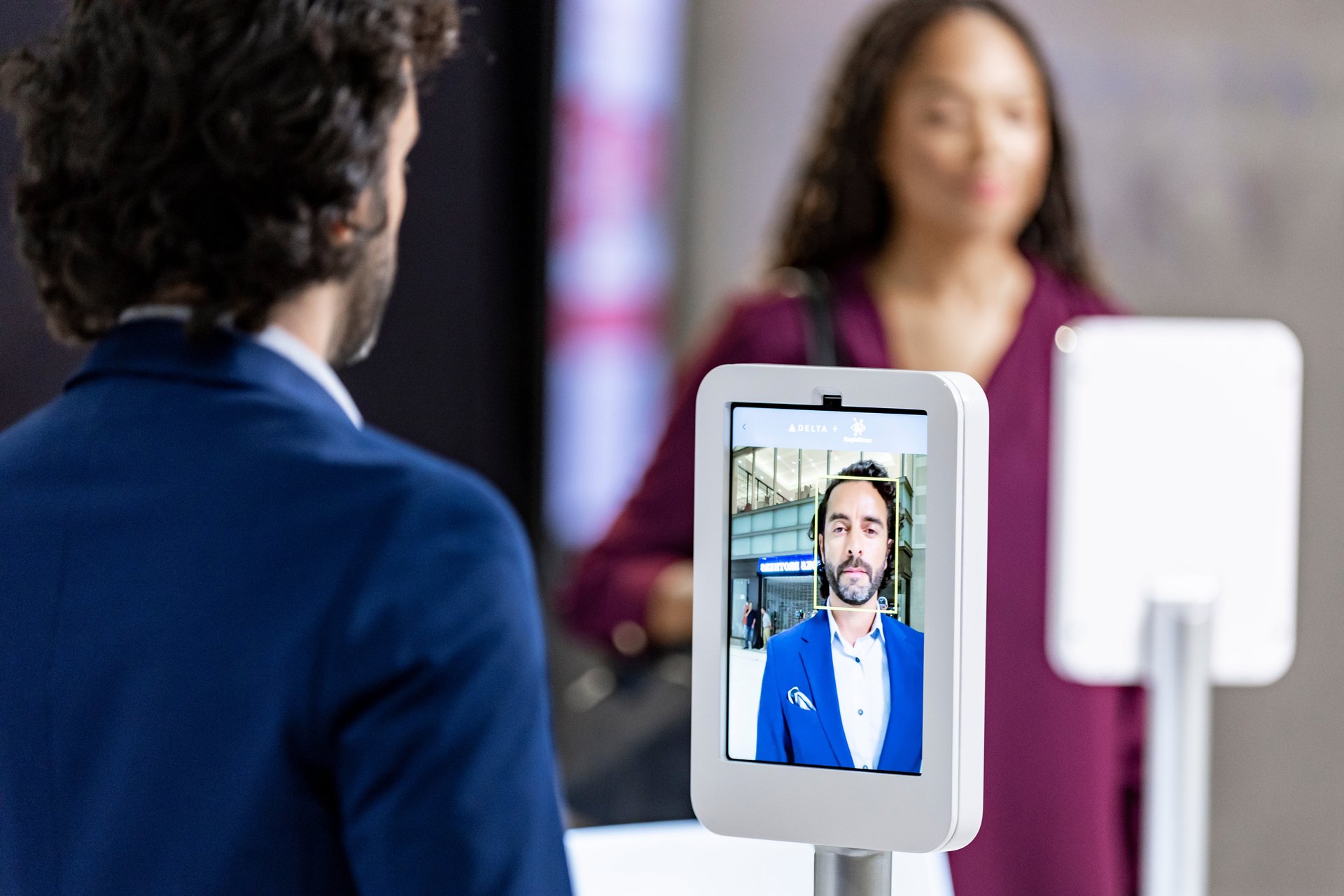Delta is experimenting with flight information boards that know who you are and where you’re going
Forget puzzling over flight information display boards. Nevermind fumbling with your phone to access another app. Imagine a future where every directional sign at the airport pointed you to your gate.


Forget puzzling over flight information display boards. Nevermind fumbling with your phone to access another app. Imagine a future where every directional sign at the airport pointed you to your gate.
This week, Delta passengers at the Detroit Metro Airport saw a glimpse of this ideal with a technology called Parallel Reality. At the McNamara terminal is a new 21 ft. x 6 ft digital board that’s capable of simultaneously displaying the unique travel itinerary for up 100 passengers. This means that a hundred people can look at the same sign and see something different.

Developed by the California-based start-up Misapplied Sciences, a Parallel Reality display is comprised of pixels that can project millions of light rays in different directions. Digital ID systems such as facial recognition technology then pairs those rays to a specific person.
Evolution of flight information boards
Greg Forbes, who oversees airport experience at Delta, tells Quartz that Parallel Reality is a pinnacle moment in the company’s quest to improve flight information boards.
With more and more commercial flights each day—over 1,000 in Detroit alone and around 115,000 globally—the information on those schedule boards tends to get really dense, says Forbes. Delta has tried to improve them over the years by installing higher-definition screens, adjusting font sizes and colors to improve legibility, and stripping away unnecessary details on the boards. But better graphic design can only do so much, says Forbes.
“All of it was meant to cut down on the clutter but I would say that we have hit the limits of what we can do to make flight information displays more user-friendly,” he explains.

Apart from the convenience of seeing your information at a quick glance, Forbes says Parallel Reality can potentially make airports safer. “We have real safety concerns with people walking around while looking at their phones and being unaware of their environment,” Forbes says. “That’s why we’re trying to make the airport environment as convenient as your phone.”
Forbes says Parallel Reality was an instant hit with passengers in Detroit. The displays have proven to be instantly understandable and useful, especially for passengers who aren’t so savvy with technology. He says they’re also developing a function where passengers can access the information in their preferred language.
“It was really a heartwarming thing to see that this is a technology that betters the lives of people right from the get go, and not just people who like tech,” says Albert Ng, CEO of Misapplied Sciences who was in Detroit observe the launch.
“We’ve seen far too often that technology is developed for technophiles, hobbyists, and the lay person is often left behind,” says Ng, a Caltech and Stanford-trained computer scientist who spent his early career improving touchscreen displays. “It’s just the opposite. People found it [the Parallel Reality display] just so much more convenient than what they’re used to.”
Future applications of Parallel Reality
Beyond navigating the maze of transport hubs, Ng sees broader applications for Parallel Reality. Personalized wayfinding information could be useful in malls, large sports arenas, or even on highways. Signage can be made more legible, and instantly adjust for the viewer’s distance, reading angle, and sight lines.
“Any time that you step into a public environment where you have crowds of people looking for different things or having different preferences, Parallel Reality has the ability to create a much better experience,” Ng says. “We don’t have to navigate these environments like cattle anymore.”
Guarding against unintended consequences
With such a potentially far-reaching innovation, comes the potential of harm too. What about data privacy? Can Parallel Reality be hacked and create mayhem? Also, does navigating a highly personalized environment make us insular and less concerned about the people around us?
Forbes explains that the biometric information used to verify passengers’ identity is not permanently stored in a system. The details displayed on the big screens draw from the same database displayed on the Delta mobile app so it’s not any more vulnerable to hacking than those established systems.
To the fears that Parallel Reality might fuel solipsism among travelers, Forbes says so far the new signs have actually sparked conversations among strangers in Detroit. He adds that they’re developing a feature so groups of travelers can see their information together.
Parallel Reality is the latest in a series of experiments Delta is trying to create a seamless, hurdle-free airport experience. “The goal is ‘a walking speed airport’,” he explains “We’re really trying to take all the stress out.”